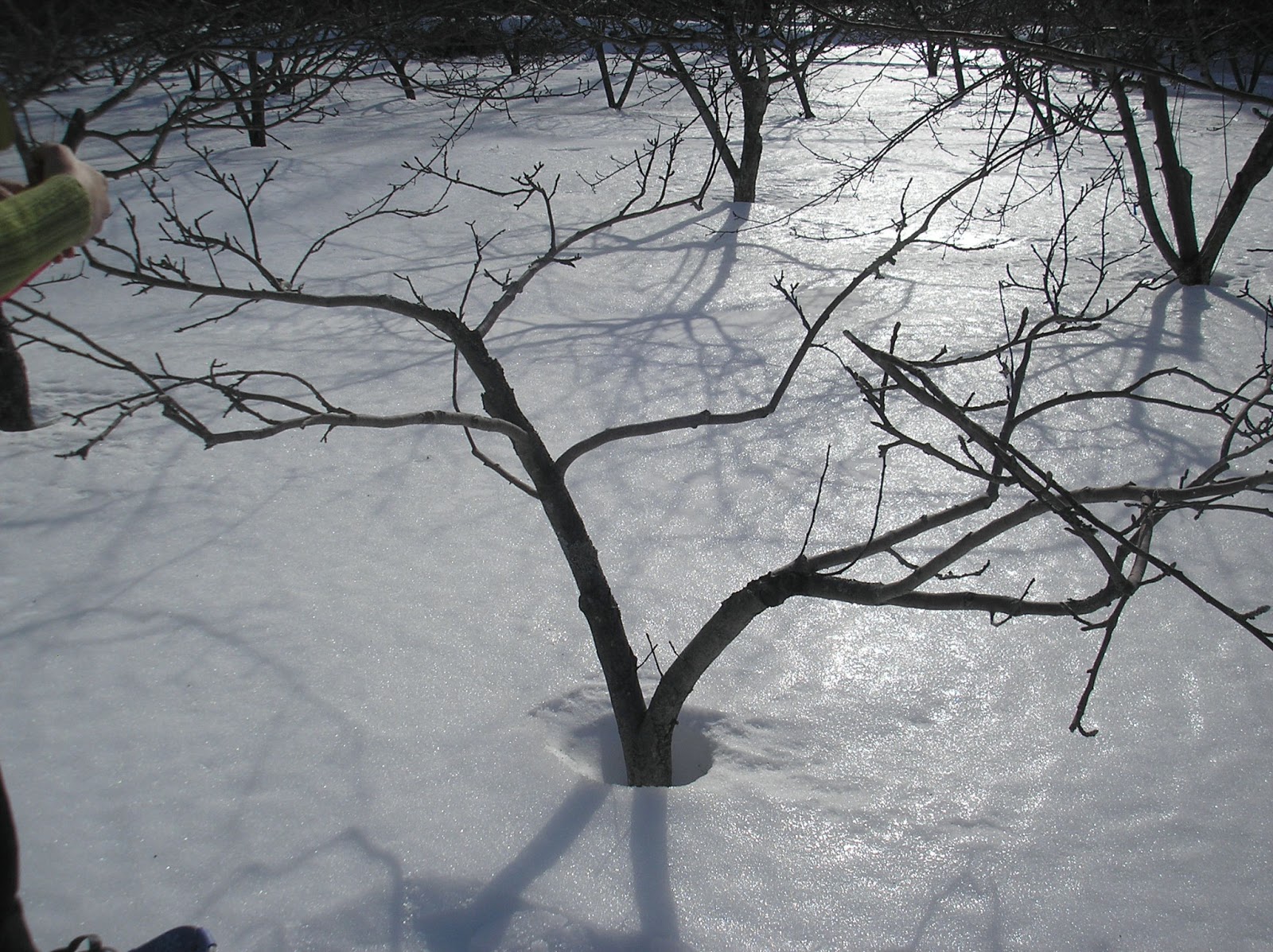PRUNING
Pruning of the 550 apple trees is in progress. It has been two years since my last post and all that
time has been spent working, wondering if it's just an ego trip to want to be a farmer, my pride wounded by constant setbacks, and trying to figure out how to make a living at such an occupation. Well so far no income, but lots of expenses. But I'm still at it and so are the trees and all the bugs and other pests that get involved in the process.
The first three years were spent renovating the trees, which had been overgrown with bittersweet, bind weed and poison ivy. The branches were all twisted and tied up in vines. So extensive over
pruning took place. And the trees which are about 20 years old and had been trained in an open
vase shape (to accommodate pick your owners) now have central leaders or central leaders in training. But quite frankly pruning seems like trying to tame earthworms. Well whatever.
So the trees last year bore no fruit. It was possibly due to the late winter, early spring, spring drought, insect infestation or maybe pruning. So this year the pruning has been handled with a
new approach. After reading a famous Frenchman ( ) training plan for fruit trees we will try his
methods. He recommends letting the tree develop naturally according to its genetic growth habit.
Some apple trees grow all their branches upright other apple varieties tend to have a more weeping habit, or some are wide spreading (like the Gravenstein's I know). Use very little cutting, bend branches to a horizontal position and do not cut any tips off of any branches seems to be some of his
main pruning techniques. Now pruning is an art and you cannot learn it in a year or two or in a month. But just to describe some of the varieties of trees that I ran into today and what their growth habits are is what will follow.
The first tree was a Gravenstein. It seems like a huge tree 20 ft wide by 15 ft tall. The older branches seem to want to lean on the ground and hang very low. Apple wood is very flexible so
during the apple season the apples bend the branches with their weight. But from previous over
pruning the apple tree has sent up many new upright branches (suckers). So with the new technique
these branches were bent underneath other branches. A few were cut. These were totally upright with no fattened fruit buds on them. The other cut branches were just to thick of a branch growing
on too small of a branch. But the beautiful gravenstein with many central leaders looked almost the
same after training as before, as it is a massive tree with many branches and the vigourous ability to grow many more.
The Cortland is a different shape with thin branchlets at the end of branches. The branchlets weep after having borne apples the previous year all around their trips. There are mummies all over the trees. These are shriveled up tiny apples that never grew and never fell off the tree. Why the Cortlands want to hold on to the mummies is inexplexible as the mummies are full of black spot fungus and spread it to the new growth in the following years. Winter Banana apples also have this tendancy. The bark is smooth on a Cortland and is one way to identify this variety of apple tree. The tree sends up a small amount of new suckers and seems to need very little pruning.
Well that's it for this day as I can only prune for 3 hours before needing to go home and take a nap.






